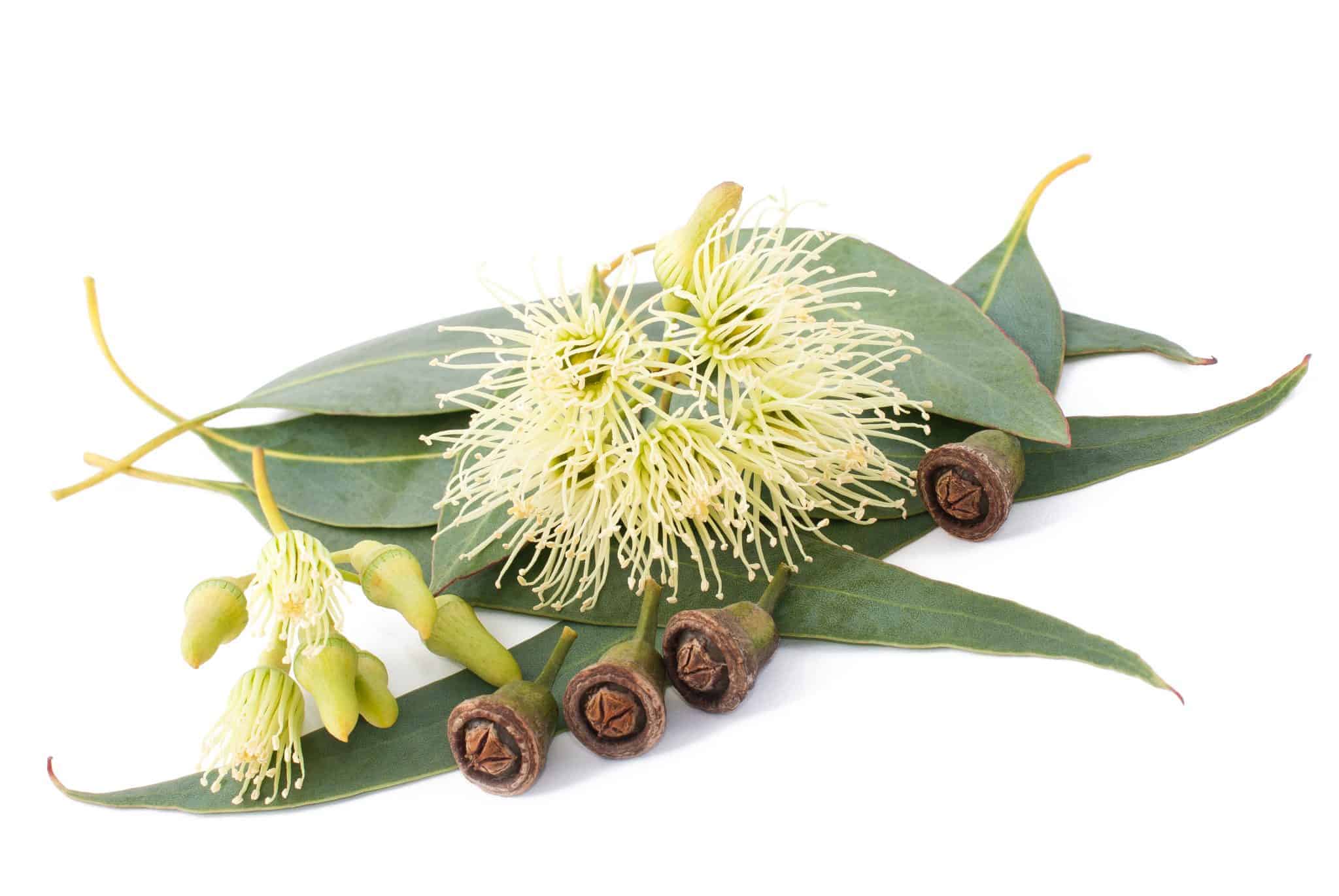Eucalyptus is so much more than just a tree that produces an oil. It has been used for years by people of many different cultures and backgrounds for a wide variety of uses.
About The Eucalyptus Tree
There are over seven hundred species of Eucalyptus, with the majority of them being native to Australia. A few are found naturally in New Guinea and Indonesia. Most species are now cultivated widely around the world in tropical and temperate climates, including the Americas, Europe, Africa, the Middle East, China and India. Most species do not tolerate frost and are therefore avoided in such climates.
The trees grow quickly and depending on the species can range from 33 feet to over 200 feet tall and is one of the tallest trees in the world. The leaves are the part of the tree containing oil that is distracted and used around the globe because of its healing capabilities. The leaves are typically waxy and a glossy green color and hang vertically from a square stem. While most trees keep their leaves year round, there are a few species that shed their leaves at the end of the dry season.
The tree also produce flowers and fruit. Their unique flowers have no petals and instead are a group of fluffy stamens. They can be white, cream, yellow, pink or red in color. The fruit is called a gumnut. The trees are planted worldwide for mostly their timber. They are the hardiest species of hardwood and there are many Eucalyptus farms that grow the trees strictly for their wood.
Eucalyptus In History
Eucalyptus was first used by the natives of Australia who eventually shared the tree and its oil’s healing powers with explorers who landed nearby. Surgeons on an exploring ship took note of the oil and used it to treat the sailors. It took years for the oil to be introduced to other countries, even after being sent to England for testing, which showed how effective the oil was at disinfecting. Once the oil was commercially produced, it grew quickly in popularity. It was used extensively during World War I as a treatment for malaria and the deadly flu epidemic that may have killed six percent of the world’s population at the time.
Eucalyptus was primarily distilled in Australia for decades but during the 1950s, companies were unable to keep up with labor costs as other countries began producing the oil and creating competition. Australia decreased the amount of oil produced but not the quality and is still considered the best producer of the oil today.
Weird Facts
There is a species of the Eucalyptus tree that has uniquely colored bark. Most species are a typical brown color but the Rainbow Eucalyptus sheds its bark a few times each year. When it does, it reveals inner bark that is red, blue, yellow and purple in color.
Trees are always at a risk when it comes to fire. Because of the oil in the Eucalyptus tree’s leaves, some have actually exploded when they caught on fire. However, the trees have an insurance policy supplied by nature. Inside the tree and roots, dormant shoots hide. They will only germinate if the tree’s hormones are triggered by heat, which would happen during a fire.
Eucalyptus trees were brought to California during the California Gold Rush by Australians in 1850, who wanted to bring the tree with to still benefit from its oil. The trees still thrive well in the state’s climate today.
Koalas mainly eat Eucalyptus leaves. They tend to stick to only a handful of species for their diet. The oil contained in the leaves is considered toxic for humans, which is why it is never recommended to consume the oil in large quantities. Koalas however have a natural tolerance for the oil and its ingredients. The kookaburra bird and the cockatoo rely on Eucalyptus trees to live in.
The Blue Mountains in Australia got their name because of the bluish hue that surround the peaks when viewed from a distance. It is thought that this tinge is created by evaporated oils from the Eucalyptus trees that grow abundantly in the surrounding areas.
The famous Australian aboriginal wind instrument, the didgeridoo, is made from Eucalyptus branches that have been hollowed out by termites. Termites are drawn to the inner wood of the branches but avoid the outer layer that contains chemicals that deter them away.
Most species of Eucalyptus trees do not tolerate cold weather. There is one species, called the Snowgum, that can withstand temperatures as low as 9 degrees Fahrenheit. They are found in the Australian Alps and to protect their branches from breaking from the weight of the snow, they will bend down as far as necessary, sometimes resting entirely on the ground.
Eucalyptus Today
Eucalyptus has grown in popularity and is considered one of the main essential oils used in homes worldwide. It is used to help prevent infection in cuts and burns. It is used to help clear the airways during colds, the flu and even tuberculosis and bronchitis. The oil is often added to shampoos and other hair products to improve the health of hair and stimulate the hair follicles, which can help combat hair loss. Creams are made with the oil that sooth sore muscles and it is a common ingredient in homemade dental products, such as toothpaste and mouthwash.
Studies regarding Eucalyptus essential oil are becoming more frequent as promising results are recorded regarding Eucalyptus’s abilities to heal skin, hair and the body. Companies that produce the oil have started to produce home remedies for common ailments that offer an alternative to dangerous modern medicine. As more about Eucalyptus oil is learned, its popularity will most likely increase just as it has throughout the years as it proved its abilities to new generations.
